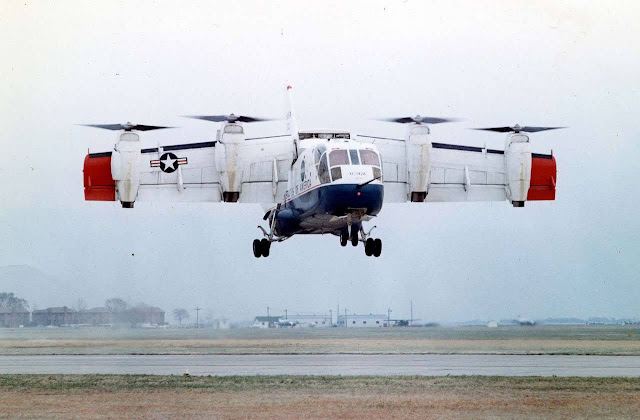
|
| How the V-22 Osprey Was Born: The True Story of an Unforgettable Invention |
The V-22 isn't the first plane to combine fixed-wing and rotary-wing capabilities.
The XC-142, like the V-22, was a game-changer but struggled in testing. The three pilots aboard one prototype were killed when it went down in flames.
There are currently around 400 Osprey tiltrotor aircraft in service with the
United States Marine Corps and Navy, and these planes have been used in a wide
variety of Special Forces missions. It's a game-changer because it combines
the best features of both a helicopter and an airplane, but it wasn't the
first to do so.
The United States Air Force and the United States
Army worked together in 1951 to create the Bell XV-3, which was the first
successful tilt-rotor aircraft that could take off and land vertically. It
could take off and hover like a helicopter but fly as fast and far as a
fixed-wing plane. However, it was the precursor to the CV-22 Osprey, which
went into production.
But there's another, mostly forgotten
experimental craft that was built to learn more about the reliability of VSTOL
transportation systems. The XC-142 was made by Ling-Temco-Vought and Ryan
working together.
Ling-Temco-Vought took over from the company that
made F4U Corsairs, while Ryan was a separate company. Despite not being a true
tilt-rotor—its engines didn't move—its entire wing structure was tilted,
allowing it to perform vertical takeoffs and landings.
How the V-22 Osprey Came to Be (Mostly) in This Picture
The XC-142A made its first normal flight on September 29, 1964, and its first
transitional flight on January 11, 1965, when the prototype took off
vertically, tilted its wings for forward flight, and landed vertically. Five
aircraft were produced.
After that, the XC-142A was flown at speeds
of 35 mph in reverse and 400 mph in forward to show that it could be a
reliable way to move troops and supplies in any weather. Up to twenty-four
soldiers would have fit in the plane, given its maximum weight load of 41,500
pounds.
Four General Electric T64 engines gave each XC-142A 3,080 horsepower.
It could reach top speeds of 400 mph, cruise at 235 mph, travel
820 miles without refueling, fly at an altitude of 25,000 feet, and have a
service ceiling of that same altitude.
During 488 flights, the five
prototypes were tested for carrier operations, simulated rescues, paratrooper
drops, and low-level cargo extractions. Even though it looked like the right
plane for the job, it was far from perfect.
The XC-142, like the V-22, was a game-changer but struggled in testing. The three pilots aboard one prototype were killed when it went down in flames. It was also said to have had some "hard landings'' and maybe even a few small crashes. The main problem was that the pilots had a hard time keeping control of the VSTOL plane, and this problem got worse when there were passengers or cargo on board.
Since the XC-142A had been a joint project between the United States Air Force
and Navy, its demise was inevitable once the Navy abandoned the project. The
Air Force allegedly planned a production version, but the DoD never gave their
blessing. Like the Bell XV-3, it was a precursor to actual VSTOL transports
like the V-22 Osprey, which are now in use.
Since 1970, the only
remaining XC-142A prototype has been on display at the National Museum of the
United States Air Force.


